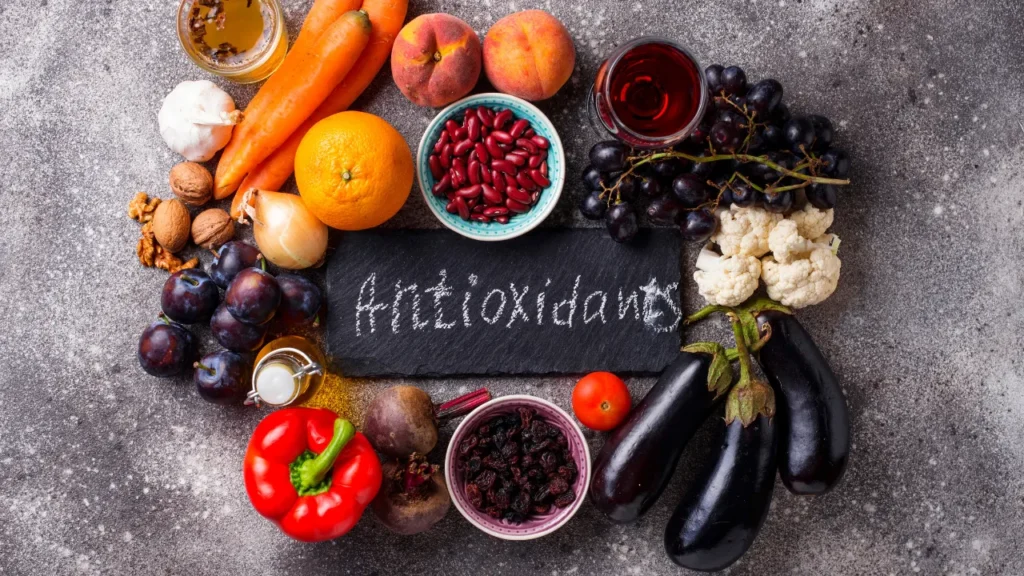Many plants contain tannic acid, a polyphenolic molecule that has drawn interest for its possible nootropic benefits, which include improving alertness, focus, and cognitive function. This article explores the chemistry of tannic acid, as well as its advantages over other substances, best dosage, adverse effects, possible interactions with other drugs, and precautions to take when using it as a nootropic supplement.
You May Also Like:
ONNIT Supplements Antarctic Krill Oil Reviewed: A Leading Memory Support Supplement
Vitamin D: Benefits, Dosage, Side Effects, Drug Interactions, and Other Important Information
Tannic Acid: Benefits, Dosage, Side Effects, Drug Interactions, and Other Important Information is an original (NootropicsPlanet) article.
Nature of Tannic Acid
Many plant species’ barks, leaves, and fruits naturally contain tannic acid which is a type of polyphenolic chemical. It is most frequently found in tea, coffee, nuts, and berries. It can also be found in the nutgalls that insects produce on the twigs of certain oak trees. Because of its astringent qualities, it can impede the growth of germs and fungi, which protects the plants from infection and predation.
Tannic acid is present in food, but it has also historically been used for medical reasons and also to tan leather, demonstrating its adaptability in a variety of contexts.
Health Benefits of Tannic Acid
Tannic acid has several health benefits, but its complicated molecular features are primarily responsible for its benefits with regard to brain health and cognitive performance. These advantages include anti-inflammatory properties, neurotransmitter system regulation, and antioxidant defense. Here, we go into greater detail on these points to help you understand how tannic acid may help maintain brain function.
1. Antioxidant Protection
Tannic acid’s strong antioxidant activity is one of its most important characteristics. The brain’s high oxygen consumption and plethora of lipid-rich, peroxidation-prone structures make it especially vulnerable to oxidative stress. Oxidative stress is linked to the pathophysiology of many neurodegenerative diseases, such as Parkinson’s and Alzheimer’s. It also plays a role in the aging process which results in cognitive loss.
By scavenging free radicals and chelating metal ions that can accelerate detrimental oxidative processes, tannic acid reduces oxidative stress. Tannic acid helps shield brain cells from oxidative damage by neutralizing these reactive oxygen species, preserving the integrity of cellular structures and functions crucial to cognitive processes.
2. Modulation of Neurotransmitter Systems
The neurotransmitter systems in the brain, which are essential for mood, thought processes, and general brain health, are impacted by tannic acid. It has been demonstrated that tannic acid alters the levels of important neurotransmitters like acetylcholine and dopamine. Acetylcholine is necessary for memory, learning, and alertness, while dopamine is important for motivation, rewards, and attention.
Tannic acid has the ability to improve memory, attention, and learning ability by influencing the amounts and activities of these neurotransmitters. Furthermore, by reestablishing neurotransmitter equilibrium, its interaction with neurotransmitter systems may provide therapeutic benefits for mood disorders and neurodegenerative diseases.
3. Anti-inflammatory Effects
Cognitive decline and the onset of neurodegenerative disorders are both influenced by chronic inflammation. Because tannic acid has anti-inflammatory qualities, it may help protect the brain by lessening neuroinflammation. It modifies multiple signaling pathways involved in the inflammatory response and suppresses the synthesis of pro-inflammatory cytokines.

Chemistry of Tannic Acid
Tannic acid is a chemical member of a larger group of substances called hydrolyzable tannins. Its structure consists of many gallic acid residues esterified around a core glucose molecule. Tannic acid’s capacity to bind and precipitate proteins is the basis for many of its biological and industrial applications, is attributed to this complex structure.
Tannic acid’s source and extraction technique can affect its molecular weight and particular structural characteristics. Its biological availability and therapeutic potential are influenced by its variability, which also affects its solubility, stability, and reactivity.
There is a need to understand the biochemical makeup of tannic acid to understand tannic acid’s modes of action in biological systems, such as its antioxidant activity, interactions with metal ions, and regulation of enzyme activities. These biochemical properties of tannic acid contribute to its diverse range of effects on human health, including its potential use as a nootropic supplement.
Physiological Mechanism of Action of Tannic Acid
Tannic acid has a variety of nootropic effects that are mediated by different metabolic mechanisms. The main factor is the antioxidant capacity of tannic acid. Tannic acid lowers oxidative stress in the brain, which is important for preserving cognitive function and averting neurodegenerative illnesses. It does this by scavenging free radicals and chelating metal ions.
As mentioned, tannic acid has also been shown to alter neurotransmitter systems, especially those involving acetylcholine and dopamine, which are important for memory, alertness, and focus. It can improve synaptic plasticity and neural transmission through its interaction with these neurotransmitter systems, which will improve cognitive processes.

Optimal Dosage of Tannic Acid
There are no standardized extracts available for tannic acid and it can be difficult to determine the best dosage for nootropic purposes. This is because the majority of studies have used a wide variety of dosages, sources, and modes of administration of tannic acid which can all affect the effective dosage. Under the supervision of a healthcare provider, you must begin with lower doses and progressively increase them based on tolerance and effects.
Side Effects of Tannic Acid
Nevertheless, tannic acid is commonly categorized as a safe compound as long as it is consumed in moderate proportion. However, side effects include some forms of disorders related to the gastrointestinal tract, and liver, and also possible interference in the nutrient absorption process, especially from iron. Tannins may bind with proteins and cause nausea, vomiting, or diarrhea in some cases.
Potential Substance Interactions of Tannic Acid
Tannic acid can be of particular concern when combined with certain dietary supplements, medications, and certain foods. The possible protein-binding property of these drugs may decrease their bioavailability resulting in lower efficacy of drugs or an increase in side effects. Moreover, tannic acid’s effect on liver enzymes might affect the metabolism of drugs.

Best Responsible Use of Tannic Acid
If you wish to use tannic acid as a supplement for enhancing brain power, it is important to follow guidelines for responsible use. This should be done by consulting an expert healthcare professional before the start of taking tannic acid treatment, especially if you have any pre-existing conditions or are taking some medications. Keeping track of its side effects and interactions, as well as modulating dosage are vital points to be noted too.
However, more comprehensive research is necessary to fully elucidate the dangers or beneficial effects of long-term use. The safest and most efficient method seems to be the cycling method in which the supplements are taken in periods with breaks in between.
Tannic Acid:
Conclusion
Tannic acid is a polyphenolic molecule that is found in many plant’s bark, leaves, and fruits. It is originally utilized by people to tan leather or other medical reasons. Recently, it has recently been explored for its use in the realm of cognitive improvement. The most notable property of tannic acid that contributes to cognitive advancement is its antioxidant properties. Antioxidant effects can effectively protect the brain from oxidative damage while preserving the integrity of cellular structures.
However, more research is needed to find out other exact pathways in which tannic acid affects the brain. If you are interested in taking this supplement, you should refer your doctor to find out the best dosage and potential interactions if you are taking any medications on a regular basis.

References:
- Biomedical Applications of Tannic Acid. Retrieved from:https://pubmed.ncbi.nlm.nih.gov/34991392/
- Pharmacological Effects and Mechanisms of Tannic Acid. Retrieved from:https://pubmed.ncbi.nlm.nih.gov/36029537/
- Recent Advances in Tannic Acid (Gallotannin) Anticancer Activities and Drug Delivery Systems for Efficacy Improvement; A Comprehensive Review. Retrieved from:https://pubmed.ncbi.nlm.nih.gov/33803294/
Important Note: The information contained in this article is for general informational purposes only, and should not be construed as health or medical advice, nor is it intended to diagnose, prevent, treat, or cure any disease or health condition. Before embarking on any diet, fitness regimen, or program of nutritional supplementation, it is advisable to consult your healthcare professional in order to determine its safety and probable efficacy in terms of your individual state of health.
Regarding Nutritional Supplements Or Other Non-Prescription Health Products: If any nutritional supplements or other non-prescription health products are mentioned in the foregoing article, any claims or statements made about them have not been evaluated by the U.S. Food and Drug Administration, and such nutritional supplements or other health products are not intended to diagnose, treat, cure, or prevent any disease.


